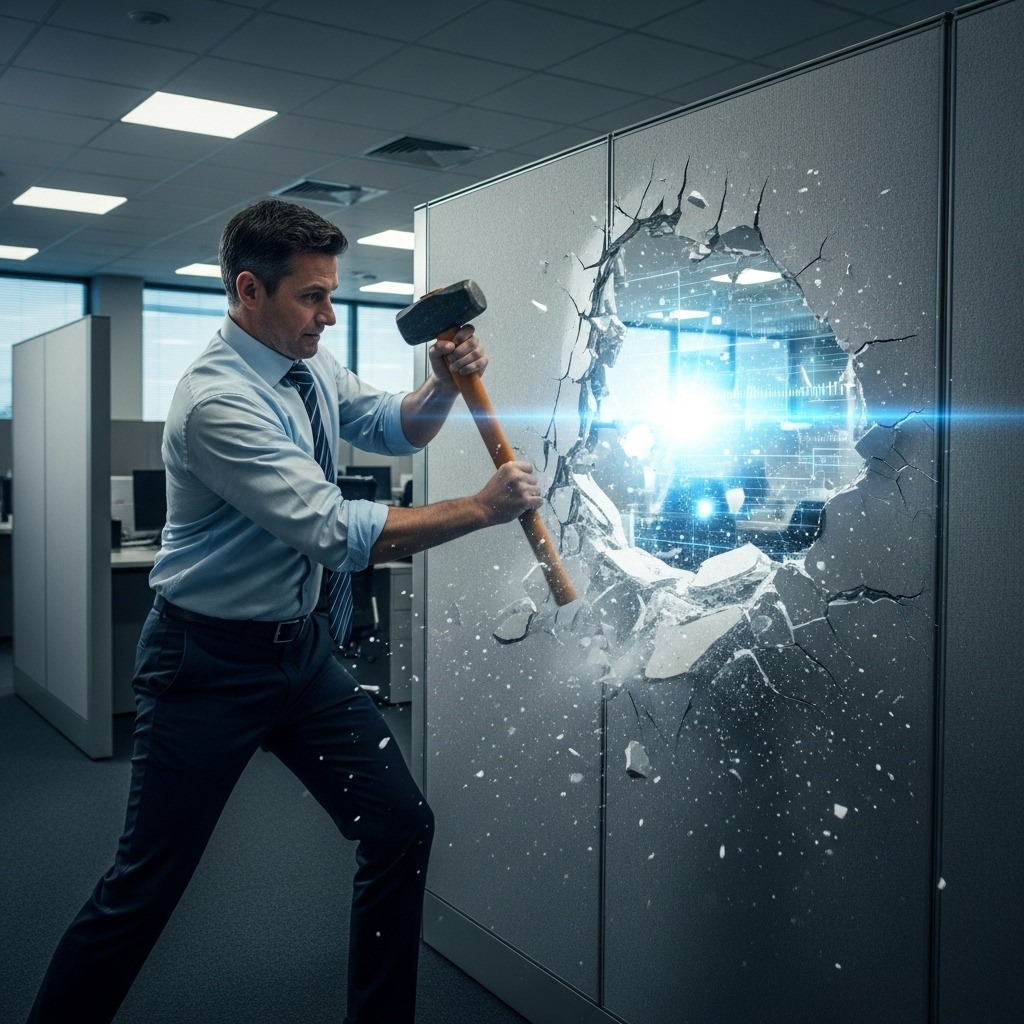I’ve walked into AI “transformation” meetings where the plan on the wall looked like a case study in how to burn money. A seven-figure budget, a shiny new model, and not one question about whether the work itself should even exist.
When that happens, I don’t nod politely. I stop the room, grab a marker, and start drawing the actual process they’re about to automate. Within minutes, the air changes — people can see the truth. They’re about to make broken work faster. And no amount of AI horsepower will change the outcome.
Why Retrofitting Fails
Old processes were designed around human limits: slow communication, sequential approvals, and manual error checking. AI erases those limits. If you drop it into the old scaffolding, three predictable failures happen.
1. You accelerate dysfunction A process with eight approvals will still have eight approvals — you’ll just get rejected faster.
Example: I worked with a compliance team that added AI-generated summaries to case reviews. It shaved 15 minutes per case but kept the same three redundant sign-offs. Net impact: almost zero.
2. You mismatch capabilities AI can work in parallel, nonstop, without needing a “next” button. Old workflows force it into human pacing, wasting most of its advantage.
Example: A manufacturer had AI drafting purchase orders, but the orders sat in a human queue for hours. The AI’s “speed” was invisible because the bottleneck never moved.
3. You bury the potential AI’s biggest value is redesigning work itself — deleting steps, changing flows, and making the system adaptive. Retrofitting locks in the old blueprint, so none of that happens.
The Redesign-First Principle
One of the AI First Principles is Requirements Demand Skepticism — question every step until someone can defend it with current logic. Here’s what that looks like in practice:
- Question every requirement If the answer to “why does this exist?” starts with “because it always has,” cut it.
- Map reality, not theory Walk the floor. Shadow the people who fight the system daily. They’ll show you where the real pain lives.
- Design for human+AI partnership Use Design a Hierarchy of Agency to decide when AI acts alone, when it recommends, and when humans decide.
- Automate last Only after you’ve stripped waste and rebuilt for AI’s strengths should you automate. Otherwise, you’re locking bad work in concrete.
What Redesign-First Looks Like
Enterprise Example – Procurement Retrofit: A global retailer used AI to pre-fill purchase orders but kept all six approval gates. Cycle time dropped from 21 days to 20.
Redesign:
- Auto-approve low-risk purchases under $5K from vetted vendors.
- AI ran compliance checks in the background.
- Exceptions routed to humans with full AI context.
Result: Cycle time dropped from 21 days to 36 hours. Human workload dropped 78%. Zero compliance failures in year one.
SMB Example – Customer Service Retrofit: A SaaS company added AI chat but required a human to “touch” every ticket before closing. Average resolution: 14 hours.
Redesign:
- Mapped actual customer pain points.
- Let AI fully resolve low-value, low-risk tickets.
- Humans focused only on high-value or high-risk cases.
Result: Resolution time dropped to 2 hours. First-contact resolution jumped from 42% to 85%. Support staff shifted to proactive upsell, generating 18% new revenue.
How to Start This Quarter
I’ve used this five-step intervention dozens of times. Pick one process and run it end-to-end:
- Pick a process you can afford to break — high volume, low regulatory risk, measurable outcomes.
- Shadow the work — don’t ask for SOPs, watch reality.
- Run a “Kill the Step” session — for each step, ask “What if we delete it?” Keep only the ones with current, measurable value.
- Design the human+AI partnership map — make the AI’s role explicit.
- Automate last — build automation into the redesigned process only.
The Stakes
Retrofitting doesn’t just waste money — it convinces people AI isn’t worth the trouble. Once a team believes “we tried AI, it didn’t work,” you’ve killed the momentum for years.
The companies that win this decade will be the ones that tear down and rebuild first. They’ll measure AI by outcomes, not by how many “AI features” they’ve plugged into legacy systems.
If you take nothing else from this: AI’s value comes from changing the shape of the work itself, not swapping the hands that do it. Start by deleting. Rebuild for human+AI from the ground up. Automate last.
If you want a blueprint for how to do it, the open-source AI First Principles will walk you through it without wasting a year on “transformation theater.”


Leave a Reply